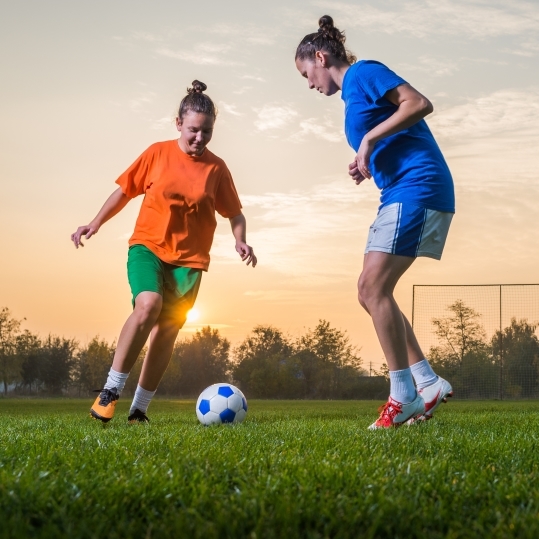In the past, when I’d tell people that I practice sports medicine, the first thing they’d ask me is, “What’s that?” Now, people still give me quizzical looks, but the questions they pepper me with are all about prevention, concussions, strains, sprains and fractures.
Sports has a unique ability to unite, and sports medicine unites doctors, patients, coaches, parents and physical therapists like no other field of medicine I’ve seen. As I walk through the halls at our Hoag Medical Group offices in Irvine, other family practitioners will sideline me with questions about managing care for patients who have non-surgical musculoskeletal issues.
These are healthy people, for the most part, who suffered sports- or “weekend warrior” related injuries and want to get back on their feet as quickly as possible.
Like any good teammate, I’m ready to assist. The extensive training in injury prevention and rehabilitation that my field provides positions sports medicine doctors like me to help in all aspects of care. If a child broke his leg on the playground 20 years ago, for instance, the quality of treatment would have varied wildly depending upon who treated him. Today, sports medicine provides a standard of care that informs how injuries are treated and prevented.
We work with the approximately 90 percent of all sports injuries that are non-surgical in nature, and we work closely with orthopedic surgeons and other physicians to manage everything from strains to injury prevention to concussions to pain management.
In fact, the “team” nature of sports medicine is why I went into this field.
I come from a family of doctors who are deeply devoted to public health and public service. My mother is the executive director of Latino Health Access, which combats public health issues in underserved areas, and my father was a family doctor whose practice provided access to treatment to low-income HIV/AIDS patients. Throughout medical school, I knew assisting my community would be my primary goal.
To me, sports and sports medicine is a natural way to connect. As a shy kid, sports gave me a way to build community. My parents moved us from Venezuela to Ann Arbor Michigan when I was three before eventually settling us here in Orange County when I was nine. Through all the changes, sports provided me with a connection.
Today I get to connect while assisting as the Tustin High School team doctor and I proudly and happily support my fellow physicians whenever they have questions about exercise and injury management.
Sports has had a profound impact on my life, and I see how staying active and playing sports creates friendships, grows confidence, and builds overall skills in all my patients. Sports encourages each of us to excel through teamwork, a spirit that extends to sports medicine as well.
Working together with other primary care physicians and specialists, sports medicine can be an important part of every active patient’s care. Now when I tell people what I do, they have a pretty good idea.
From injury prevention, to recovery, we help patients directly and support fellow doctors as they devise the game plan that will help their patients get back in the game safer, healthier and faster.



